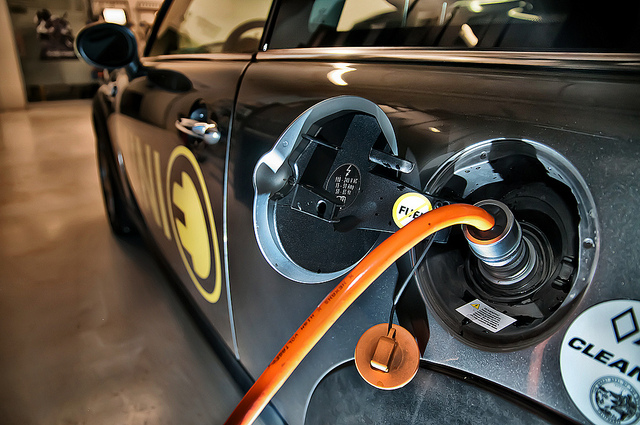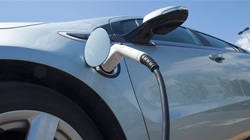In August, the California legislature passed SB1275, known as the Charge Ahead California Initiative, designed to bring 1 million electric cars to California by 2023. Authored by State Senator Kevin de León, the new law extends important current incentive programs and expands access to clean transportation for lower income Californians. If signed by Governor Brown, Californians will enjoy cleaner air and cleaner cars over the next decade.
Charge Ahead will continue the successful EV rebate program
One important component of the law is the continuation of the successful Clean Vehicle Rebate Program. This program currently provides a $1,500 rebate for drivers that purchase or lease a plug-in hybrid or a $2,500 rebate for battery electric vehicle buyers and lessees. The rebate program is one of the reasons that California leads the nation in electric vehicle sales with over 40% of U.S. EV sales (compared to 11% of all new vehicles) and over 100,000 EVs on the road.
This post is part of a series on National Drive Electric Week.
However, the Charge Ahead legislation also directs the state to establish an upper income limit for eligibility to receive rebates. The state will have to be careful to not set the limit too low to avoid stifling EV sales. However, an income cap will target limited funds to car buyers for whom a rebate could make the difference in their purchase. Data on the most affluent rebate recipients show that they are less likely to report that the rebate was very important to their purchase decision. So a well-crafted income cap would have little negative impact on sales but provide significant savings that can be used for other EV incentive programs.
Charge Ahead is more than just a rebate program
Rebates are only part of the plan to get 1 million EVs on the road in California. Other parts of the new law address the issue of how to bring EVs to lower income communities. For example, Charge Ahead expands an existing vehicle retirement program by increasing the cash benefits for replacing an older, dirtier car with a cleaner EV.
The legislation also sets up new financing options to make it easier for low- and moderate-income buyers get an EV. Financing help can be vital to helping less affluent car buyers enjoy the fuel savings that come with an electric car. Car sharing programs are also part of the bill. These shared-vehicle programs (similar to Zipcar) will bring low-emissions vehicles to people in disadvantaged communities who need occasional use of a car. Charge Ahead also provides funding for installing vehicle charging in apartment buildings and other multi-family housing.
Altogether, the programs that are part of Charge Ahead should boost California’s efforts to reduce oil use and global warming emissions and continue to place the state as a leader in electric vehicle use.


